The Kilns And World War II

Another bit of history from The Kilns. The house in Oxford, England and home of C. S. Lewis, served as living quarters for teenage girls during Operation Pied Piper. During World War II Operation Pied Piper was a major evacuation program that took place in the United Kingdom. The operation aimed to protect children, particularly those living in urban areas, from the dangers of bombing raids by evacuating them to rural locations.
Some important things to remember about Operation Pied Piper include:
1. The evacuation: Starting on September 1, 1939, over 3 million people, mostly children, were evacuated from cities and towns to safer areas in the countryside. The initiative ended in 1946.
2. The reasons behind it: The main objective of the operation was to safeguard children from the devastating effects of aerial bombings by the Nazis. By relocating them to areas less likely to be targeted, it was hoped that their lives would be protected.
3. The process: Children were often separated from their families and housed with host families or in designated reception areas. Some experienced homesickness and difficulties adapting to new environments, while others formed lasting bonds with their hosts.
4. Post-evacuation challenges: After the initial wave of evacuation, many children returned to their families in cities due to the lack of immediate bombing threats. However, when intense bombing resumed later in the war, further evacuations occurred.
5. Long-term impact: Operation Pied Piper had a significant impact on the affected children and society as a whole. It highlighted the vulnerability of civilian populations during wartime and raised awareness about the need for child protection services and support systems.
It’s important to note that while Operation Pied Piper was a crucial part of history, it may also contain personal stories and experiences that contribute to the broader narrative of the human experience during times of conflict. I became interested in learning more about Operation Pied Piper while reading The Secret Book of Flora Lea by Patti Callahan Henry.

While at The Kilns this week I had the opportunity to spend some time in the room where the children stayed (see photo). I tried, but couldn’t, to imagine what it must have been like to have a luggage tag put around your neck and shipped off to be picked out of a line and then spend long periods of time with people you did not know. I did love the story told while I was here at The Kilns that Jack (what everyone called C. S. Lewis) would sneak the girls out through the window to take them for fish and chips. That really raises him on the coolness scale for me even further. Don’t you agree?

The other notable area on the site is the bomb shelter (see photo). It is hard to imagine living less than an hour from London where bombs were falling and wondering if and when it might happen in Oxford. It is believed that Oxford was safe because it was being saved by Hitler to be his capital of Europe.
This was some very interesting history and certainly shaped many lives.
Narnia Door To Leadership
Today I had a Narnian experience. I went to the Narnia Door located in St Mary’s Passage in Oxford, England. I’ve got to say that making that walk with the Lamp just ahead was just like I would imagine Narnia. And the door! From the wood used to make the door, to the lion carving on the door, to the two sculptures of fauns that look like Mr. Tumnus, I could see why there are many who believe this was the inspiration of C. S. Lewis for Narnia. It is cool that this is one of those myth versus history things because no one knows for sure. Me; I believe there might just be some truth to it. Think about it: Lewis was on the Oxford campus from 1925-1954. He had to see that door!



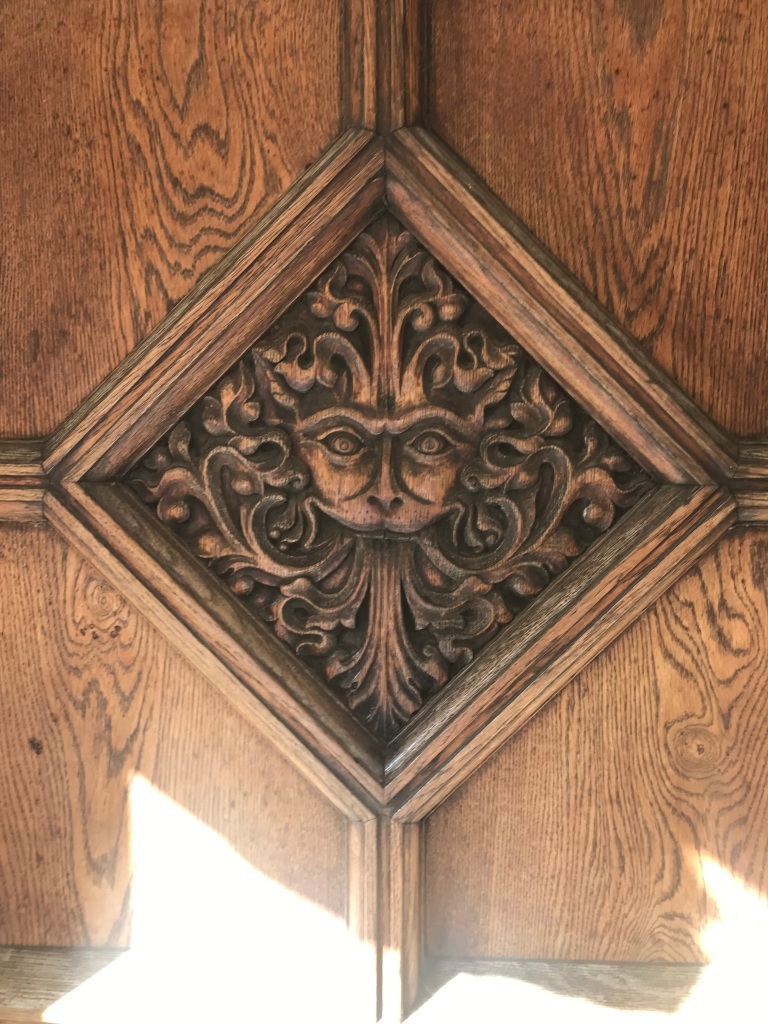
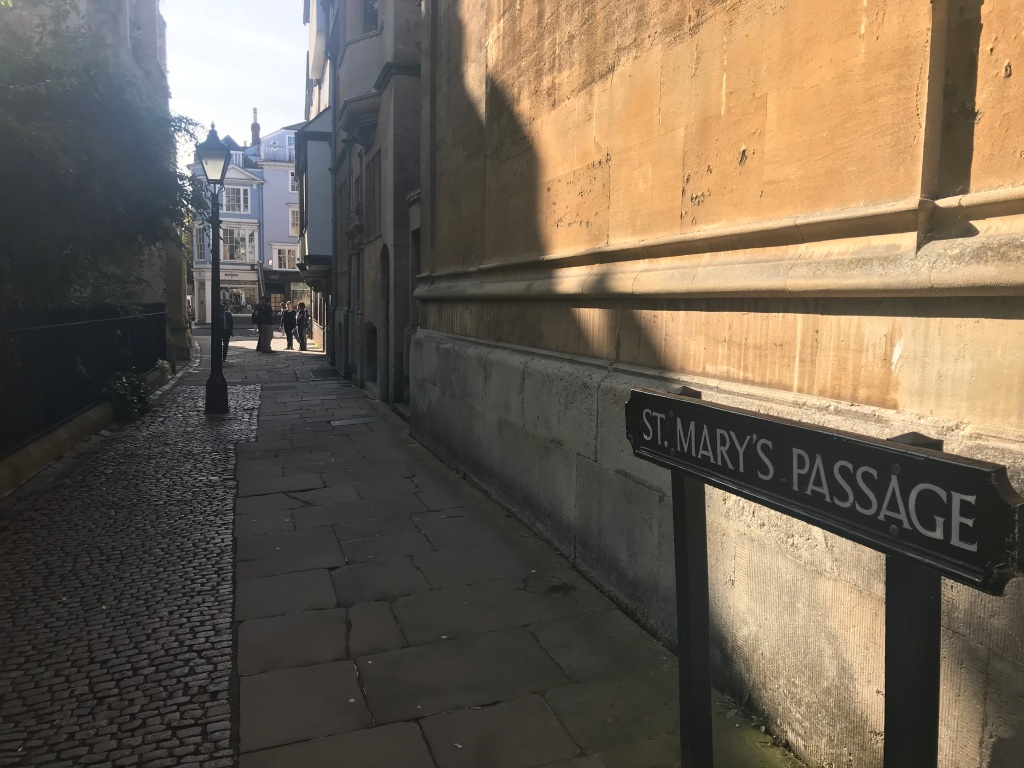
Let’s get back to the genius of Narnia. As I walked back and forth on St Mary’s Passage to the Lamp and back to the door, over and over, I was thinking about the kids – Peter, Susan, Edmund and Lucy Pevensie (check out my pictures). What it would have been like to have been them going through the wardrobe to the Lamp and beyond. Then I began to think about all the leadership lessons that Lewis had built into this fairy tale. The one that always stands out to me most is when Aslan empowered Peter (another leadership lesson) to lead the Narnian army. His reaction was that he could not do it because he had never led an army before. As a believer that everyone is a leader, we often find ourselves in situations where we don’t have all the experience we might want or all the answers. Reality is, this will always be the case. I just told a group of mentor principals last week that my first year as a principal I would have people come and ask me questions that I had no idea what they were even talking about. Fortunately I had great people around me and we were able to figure out all the answers together. And, I want to note: we NEVER used the philosophy of “fake it till you make it.” That DOES NOT WORK! Don’t try it. As we know, Peter channeled his courage and was successful.
Through my involvement with the University of Oxford I just became a member of 2U’s edX Career Engagement Network and they posted this yesterday:
Re: Imposter Syndrome – An estimated 70% of the population has experienced imposter syndrome at some point in their career. You don’t need to meet 100% of the requirements to apply for the job.
I love what they say here: you don’t need 100% of the requirements to apply. In fact I’m not sure there is ever a person that has 100% of the requirements. I know I never have; particularly when I founded my own business or, as I mentioned earlier, became a principal for the first time. I find teachers bringing up imposter syndrome. Amazingly, it is always some of the best teachers I’ve witnessed in the classroom. Unfortunately, many times the feelings of imposter syndrome come from expectations put on us by others who really don’t understand the job to start with. Bottom-line: we need to allow ourselves to be challenged and grow.
The Life Beyond Our Own Air Is Not Evil
I have another post inspired by Out of the Silent Planet by C. S. Lewis. I read this book while living at The Kilns this week as a Scholar in Residence. Dr. Debbie Higgens, Director of the C. S. Lewis Study Centre at The Kilns, handed me the book when I was first getting settled in after learning I had not read The Space Trilogy by C. S. Lewis that includes Out of the Silent Planet, Perelandra, and That Hideous Strength. At the time I wondered how this was going to fit the research work and writing I was doing about leadership, but I have to say it was an exciting guide to this week’s work. There have been so many phrases in the book that went right along with my studies. One such line in the book made me think about my overall pilgrimage to The Kilns. Here I was in a foreign country, by myself, in a house living with people I had never met until a few hours ago. A little scary, but glorious all the same. Then, in Out of the Silent Planet I read, “The tellers of tales in our world make us think that if there is any life beyond our own air, it is evil.” You ever thought about how true this is?
Our mythology has taught us that any life form, or anything outside of our own atmosphere would be bad or evil. Now, Neil Armstrong and company helped to subside this, but we still do this, even when thinking and speaking of of other countries. Before leaving to come here I had people asking me if I was nervous or scared to be living with people I did not know at The Kilns. This was curious to me – they are humans just like me – once I said “hello” they would not be strangers anymore. Just another reason why building relationships is so important. One of our challenges to inclusion is the myth of how different anywhere and anyone beyond our own air is. Not that everyone believes other places to be evil, but it is close to that in some instances. Our differences scare us when they should excite us.
I get there being an uneasiness when first meeting someone from a different country, but when truly getting to know them the uneasiness goes away very quickly. When arriving at The Kilns I literally put my bags in my room and was ushered to the dining room for tea. I had never done a formal tea before so I needed to be taught. My hosts were gracious in explaining things like how to put jam and clotted cream (in that order – trust me it is a big deal in the English air space) on my biscuit. It was a glorious time that I will never forget. In fact it is one of the highlights of my experience. I really got to know those I would be living with. My point is, I know people who that would have completely stressed out. Somewhere we have gotten wired in our systems just what Ransom said in Out of the Silent Planet, “The teller of tales in our own world make us think that if there is any life beyond our own air, it is evil.” I know he was referring to outer space in this book, but the “beyond our own air” can apply in some cases to the next neighborhood over.
We need to work hard to break this myth, particularly in our young people, by giving them experiences in others’ air. As adults we need to also take the opportunity to get in other human air space and get to know more of our fellow humans. Let’s get out there and experience life beyond our own air.
My Mad Obsession For Learning
As you are aware if you have been reading my posts this week, I am reading Out of the Silent Planet this week at The Kilns. This morning will be by last morning until my next visit. As I reflected, with the smell of my new morning favorite of crumpets with jam and clotted cream (applied in that order I might add – because it is a ‘thing’ here) this morning, I realized that what C. S. Lewis said in Out of the Silent Planet is so true: “The love of knowledge is a kind of madness.” My eagerness to gain deeper learning of C. S. Lewis and study his work through the lens of leadership has become somewhat of a mad obsession. But that mad obsession has led me on this wonderful odyssey. I am headed to Oxford today to spend time at the Bodlein Library for further study. Additionally, I began courses at the Saïd Business School of the University of Oxford this week in Professional Services Firms leadership. More to come on where all this research, studying, and learning will take me; or, better yet, allow me to take others!
Last week I had the opportunity to learn from Gary Bolles as part of The Kevin Eikenberry Group‘s Virtual LeaderCon. As a student of Peter Drucker, who said, “Culture eats strategy for breakfast,” I perked up when Gary said, “Mindset eats skill set for lunch.” Bolles had outlined the three rules of our work as we know it now:
- Mindset
- Skill set
- Tool set
Bolles was encouraging us to start with the growth mindset and encourage everyone we serve to create personal development plans and consider themselves lifelong learners. As you may know, I am not a fan of the term ‘lifelong learner’ as we are learning every day whether we want to or not – it is about what we are doing with that learning that matters. In my case, I have gained a mad obsession for learning. That mindset for learning will invariably cause gains in ‘skill set’ and ‘tool set’. This really flips the old school of thought that we must start with all the technical skills. One of the very profound things that Bolles said was, “The future of work will be judged by how we have helped others lead.” He went on to say that, “…leaders will be judged by how many problems never reached their desk.” So, for this continual learning to happen we, as leaders, must take responsibility for helping others. And, since I believe everyone is a leader; this means we must all be responsible for helping others and growing our own knowledge.
First Bubblings



As you know, I am at The Kilns in Oxford, England right now as a Scholar in Residence for the C. S. Lewis Foundation. It has been an amazing week and right now I am having my morning coffee sitting where Jack (C. S. Lewis) would have been sitting in the Common Room. I came out here intending to finish reading Out of the Silent Planet but instead looked over at the bookshelf beside me and pulled out Boxen: Childhood Chronicles before Narnia. Douglas Gresham wrote the Introduction and in it said, “So there was a sort of emotional and intellectual gap in Jack and Warnie’s literary experience” (p. 8 in Boxen). Gresham was referring to the books available in the house which were too old (advanced) for them. Their parents had no taste for faery (English spelling) tales. So, they bridged that gap. Imagine that C. S. Lewis was only eight years old when he described power and the rise and fall of nations in ‘History of Mouse-Land’ (p. 30 in Boxen).
Interestingly, Jack and Warnie did not write Boxen for anyone but themselves, but it could be a leadership book. Here’s what I mean (descriptors in parenthesis are from me):
- King Hacom used his power well and used counsel (collaborative/open minded).
- King Bublish I was conceited and full of pride (humble).
- King Benjamin was popular and knew everyone (Relationship builder).
- Governor Leppi I was a great scholar, but cruel, foolish, stubborn, and weak (pretty self explanatory).
As I reflect this morning, my mind is going in several different directions. Douglas Gresham called Boxen the “tangible and readable first bubblings forth of the springs of literature that were, years later to be the source of a great river from Jack and a healthy tributary from Warnie…” (p. 10). We talk a lot about making sure we are teaching creativity to our children and that we are making space for creativity in adults, but we need to make sure we give everyone the opportunity for “bubblings” no matter what state of life. I, in my sixth decade now am bubbling over from all the new thoughts in my head. Oh, to be sitting here having coffee with and talking to Jack!
Our Collective Identity

Mythology has come up a lot in the book I am reading while sitting where C. S. Lewis sat in the Common Room at The Kilns. The book is Out of the Silent Planet. I had not read Lewis’ acclaimed three volume Space Trilogy and was handed the books shortly after I arrived here for my Scholar in Residence Program. Wow, this is some incredibly thought provoking writing. One such quote from the book is, speaking of the character of Ransom, “It even occurred to him that the distinction between history and mythology might be itself meaningless outside the earth” (p. 169). The distinction between history and mythology lies in their nature and purpose. History is the study of past events based on evidence and facts, aiming to provide an accurate account of what happened. It often relies on primary sources such as eyewitness accounts, documents, and archaeological findings. The primary goal of history is to understand and interpret the past.

A place where the distinction of history and mythology gets blurred is the ideas of legends and heroes: American mythologies also include legends and heroes such as George Washington, Abraham Lincoln, and Martin Luther King Jr. These figures are celebrated for their contributions to American history and are often seen as symbols of national identity and values. I believe, however, these historical humans should be studied as human beings and not heroes or legendary myths.
On the other hand, mythology refers to a collection of stories, beliefs, and traditions that are often passed down orally or through written texts. Mythology may include elements of history but also incorporates supernatural, symbolic, and legendary elements. It serves various purposes such as explaining natural phenomena, teaching moral lessons, or outlining cultural values and beliefs.
The concept of the American Dream is a powerful myth in American culture. It represents the idea that individuals can achieve success, prosperity, and upward mobility through hard work, perseverance, and determination.
While history strives for accuracy and relies on verifiable evidence, mythology is more focused on conveying deeper truths and exploring the human experience through storytelling. Mythological narratives can be influenced by cultural, religious, and societal factors, making them subject to interpretation and evolution over time.
Mythologies and history are a part of all cultures around the world and play a significant role in shaping our values, rituals, and understanding of the world. They provide insights into a culture’s history, worldview, and collective identity.
Studying What Is Enjoyable
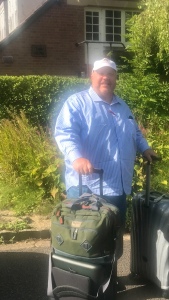
This morning I moved into The Kilns in Oxford, England for the week as a Scholar In Residence for the C. S. Lewis Foundation. The Director of the C. S. Lewis Study Centre invited another scholar and I to have tea this afternoon. It was an incredible conversation, and my fellow scholar is working on her Masters Degree and when we were discussing how she chose her degrees she stated that she chose a subject that was enjoyable for her to study. At a time when it seems that all decisions are based on obtaining a high paying job in the future, it was actually quite refreshing to hear her standing by what she loves and enjoys. This is why I am such a champion of high quality fundamental experiences for students to explore and find those areas of interest that will be enjoyable for them. This also will enable the student to find their purpose.
“The only way to do great work is to love what you do.” ~ Steve Jobs
So, I ask the question: Should a person pick a degree of study based on what they love or what will land them a dream job? That ultimately depends on the individual and their priorities. Some prioritize pursuing their passions and choosing a degree based on what they love, while others prioritize finding a degree that will lead to a stable or fulfilling career. It’s important to consider both factors and find a balance. As I mentioned earlier, it is helpful to explore and research different career paths related to interests to see if there are viable options available. Additionally, speaking with professionals in a field of interest can provide valuable insights into the job market and potential opportunities. Ultimately, it’s about finding a path that aligns with a person’s interests, passions, purpose, and long-term goals.
Princess Diana, Mother Theresa, & Florence Nightingale: Their Similarities and Their Differences

Today I had the opportunity to dig deeper into the life of Florence Nightingale. I flew into London, England this morning for my Scholar in Residence program with the C. S. Lewis Foundation at the C. S. Lewis Study Centre at The Kilns. Before heading to Oxford, I spent time at the Florence Nightingale Museum. My interest in studying more about Florence Nightingale was inspired by the Audible Original Wild Swan: A Story of Florence Nightingale by Patti Callahan Henry. I already blogged about this once in Dreaming of Being Truly Useful.

There was an artifact in the museum that really jumped out at me. The postcard featured Princess Diana, Mother Teresa, and Florence Nightingale together that an artist had rendered. The museum provided two thought provoking prompt questions that I will provide some thoughts on:
1. Why do you think the artist chose to draw all three women together on the same postcard?
I believe the artist wanted to highlight the impact these women had on society and their respective fields. Each of them made significant contributions in their own ways and brought attention to important social issues. By depicting them together in a painting, an artist could be emphasizing the power of their collective influence and the lasting legacy they left behind.
An additional reason could be to celebrate these women as icons of compassion, kindness, and service. Princess Diana, Mother Teresa, and Florence Nightingale are all known for their selfless dedication to helping others and making a positive difference in people’s lives. Drawing them together could serve as a symbol of inspiration and remind viewers of the importance of empathy and generosity.
2. What are their similarities and differences?
First, they were all extraordinary women who left a significant impact on society through their work and contributions.
Secondly, they dedicated their lives to helping others and making the world a better place. Princess Diana was known for her charity work, especially in the areas of HIV/AIDS awareness and landmine removal. Mother Teresa was a renowned humanitarian and the founder of the Missionaries of Charity, an organization that provides care for the sick and needy. Florence Nightingale was a nurse who revolutionized healthcare practices during the Crimean War and is considered the founder of modern nursing.
Finally, all three women faced challenges and overcame obstacles in their personal lives. Their resilience and determination made them even more inspiring figures.
Overall, these remarkable women shared a commitment to service and compassion that continues to inspire people around the world.
Conversely, Princess Diana, Mother Teresa, and Florence Nightingale were different in several ways. Princess Diana, also known as Princess Diana of Wales, was a member of the British royal family. She gained worldwide recognition for her philanthropic work focused on issues such as HIV/AIDS awareness, landmines, mental health, and children’s hospitals. Princess Diana was known for her charm, grace, and sense of style. She used her platform to raise awareness about various causes and brought attention to those in need.
Mother Teresa, also known as Saint Teresa of Calcutta, was an Albanian-Indian Roman Catholic nun and missionary. She dedicated her life to serving the poor and destitute in India. Mother Teresa founded the Missionaries of Charity, a religious organization that provides humanitarian aid and runs homes for people with leprosy, tuberculosis, and HIV/AIDS. She received the Nobel Peace Prize in 1979 for her charitable work.
Florence Nightingale, on the other hand, was an English social reformer and the founder of modern nursing. She became famous for her pioneering work in nursing during the Crimean War. Nightingale elevated nursing to a respected profession and emphasized the importance of hygiene and sanitation in healthcare. Her efforts significantly improved patient care and laid the foundation for modern nursing practices.
While all three women were admired for their compassion and dedication to helping others, they made a difference in different areas and had unique contributions to society.
We Don’t Have To Lose

The iconic band Linkin Park has a song, “Fighting Myself”, that really got me thinking. The lyrics in the song say, “Fighting myself, I always lose.” It seems that many times when we try to overcome our own inner struggles or battles, we end up fighting ourselves. Then we often end up being defeated or unsuccessful. We need to cultivate the self-discipline of not fighting ourselves and keep pushing through obstacles. We also need to help cultivate this in those we serve. Providing a psychologically safe place, empathy, and compassion can go a long way.
It’s hard to not fight with ourselves. Sometimes, through self-reflection, self-awareness, and seeking support, we can overcome and find solutions to our inner struggles. It’s important to remember that everyone’s experiences are different, and what works for one person may not work for another. Ultimately, it’s about finding healthy ways to confront, understand, and address our inner challenges.
I’m Jumping Ship

Building strong relationships based on respect and empathy is a key leadership quality. help prevent individuals from feeling the need to distance themselves and watch the leader fail. These relationships are built by establishing open lines of communication and creating a culture of trust and transparency. Being included in decision-making processes and ensure that each person’s voice is heard and valued. By providing support, recognition, and opportunities for growth, we give individuals a stake in the success of the team or organization. It is also important for the leader to address any concerns or grievances promptly and effectively, showing that we take feedback seriously.

Unfortunately, we have probably all experienced a lack of trust or disillusionment with the leader’s actions or decisions. I know I have. There is a great line in Beartooth’s song, “Doubt Me”: “I’ve let you take enough from me; I’m jumping ship to watch you sink; When you look back and I’m still standing.” You ever felt this way? Again, I have. There could be several reasons why someone might say that to a leader. One possibility is that we feel like the leader has taken advantage of us or caused us harm in some way. We may believe that by distancing ourselves from the leader and observing their downfall, we can regain a sense of power or justice. No matter the specific context the outcome of someone wanting to jump ship always involves circumstances surrounding the relationship between the person and the leader.

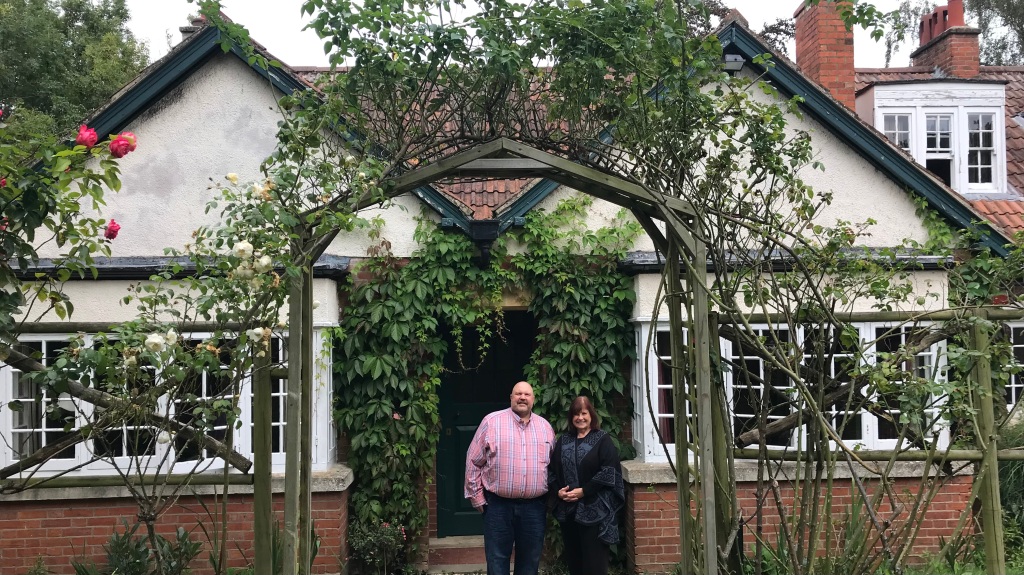

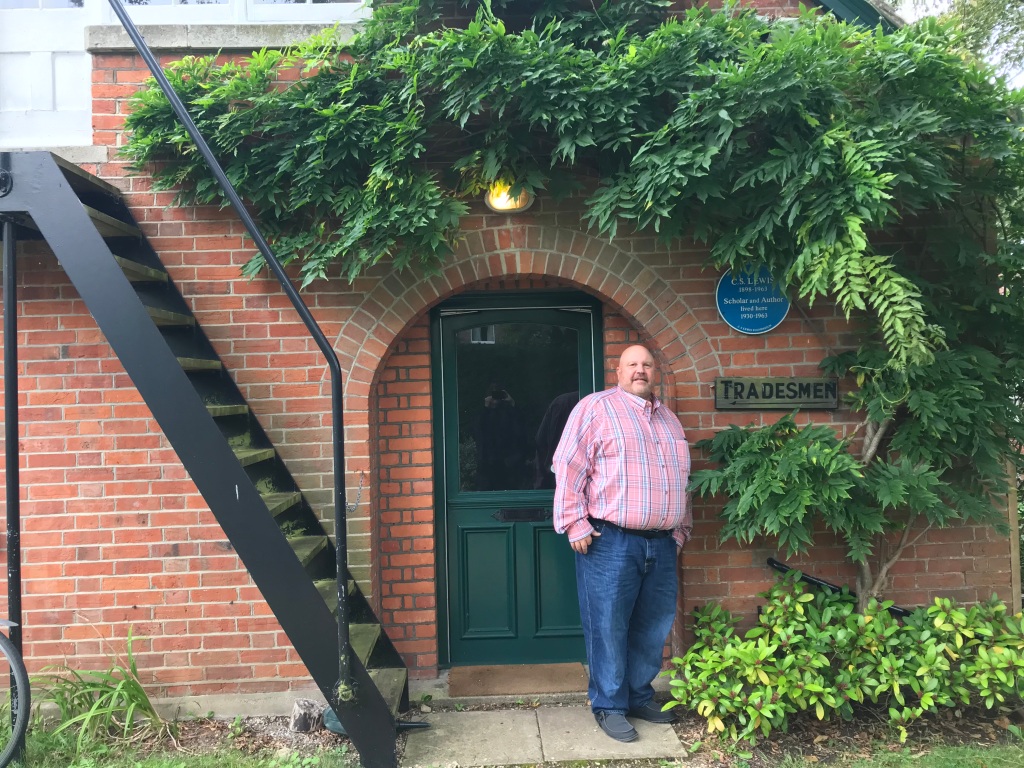
leave a comment